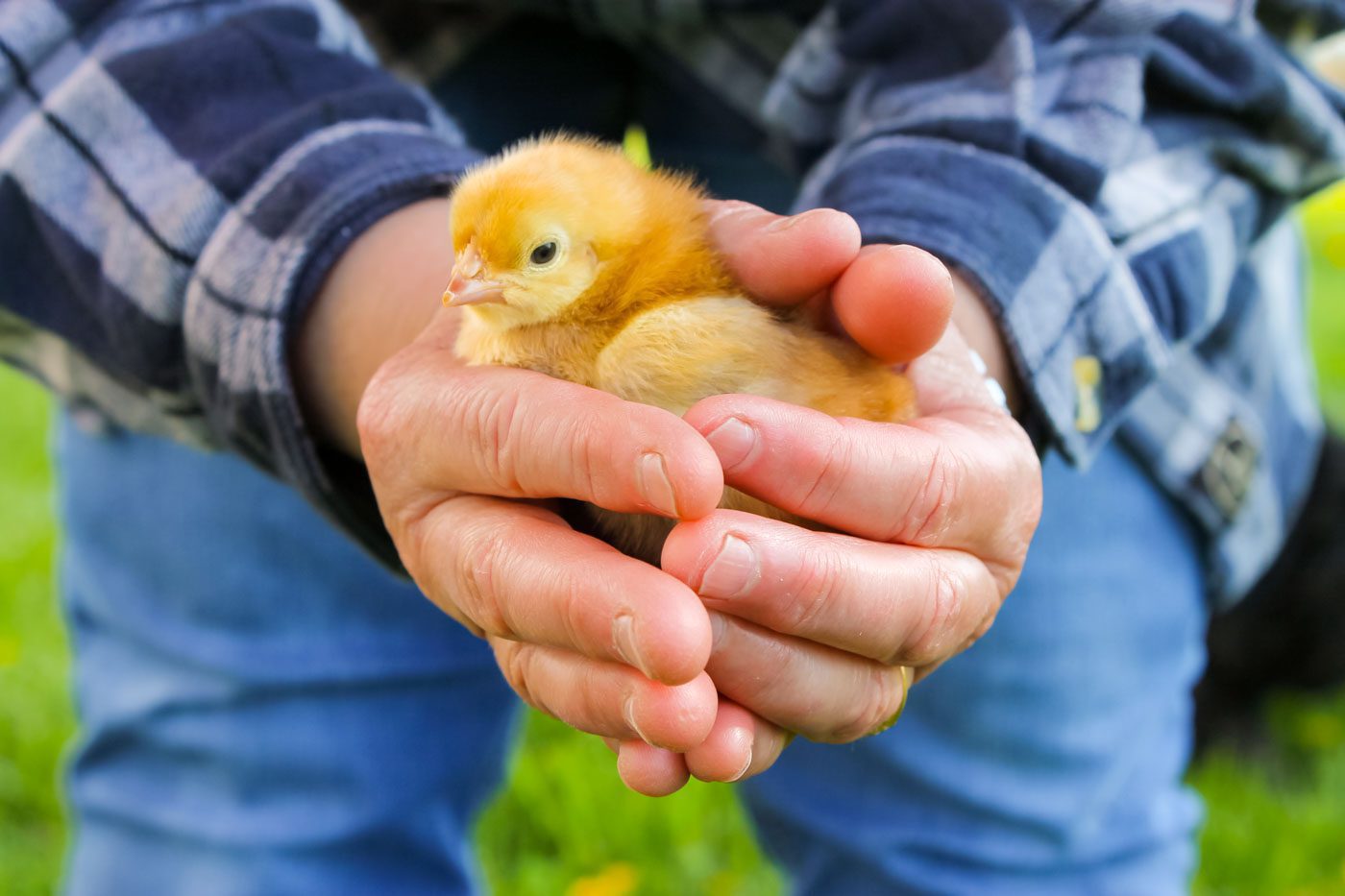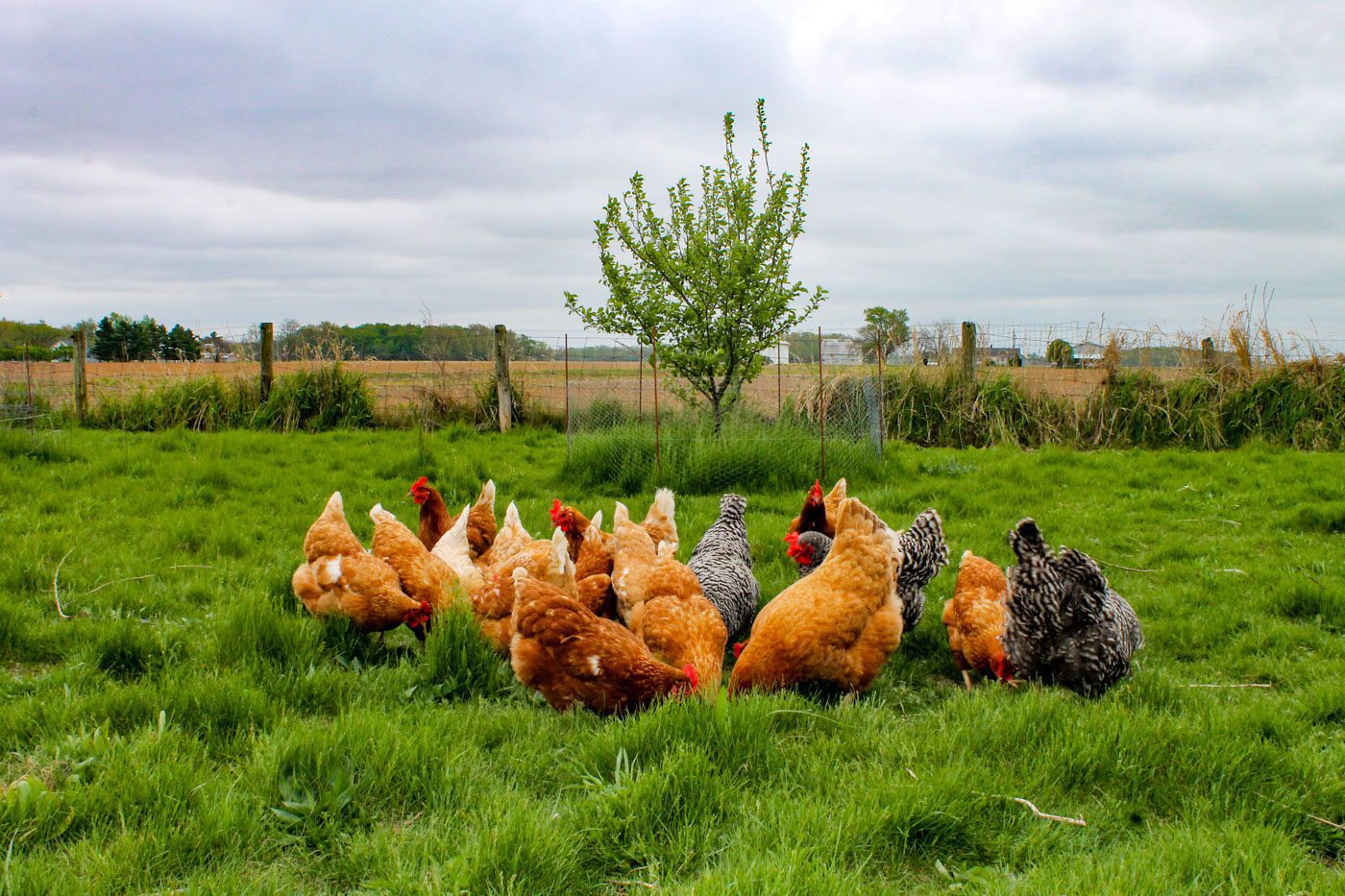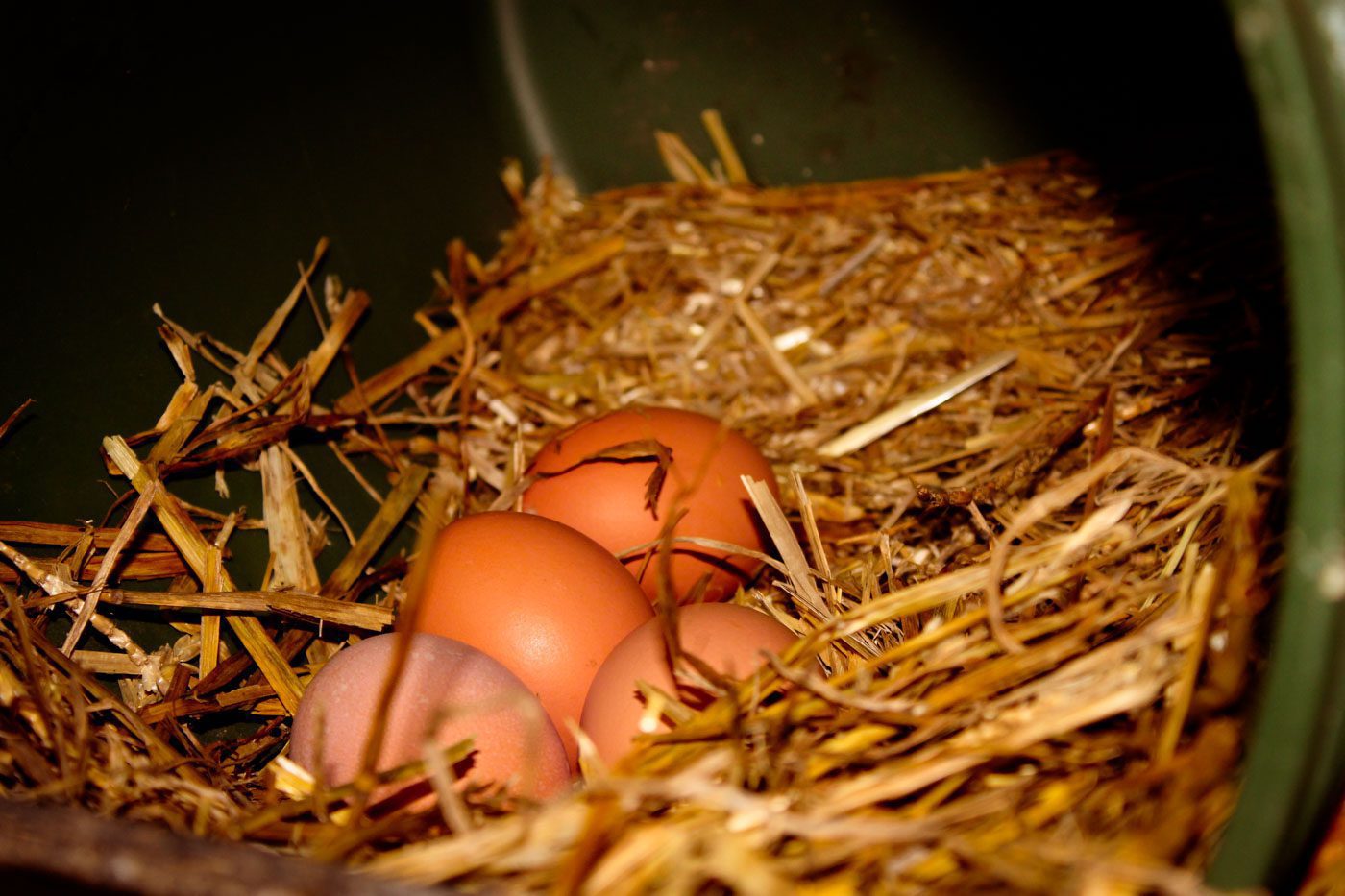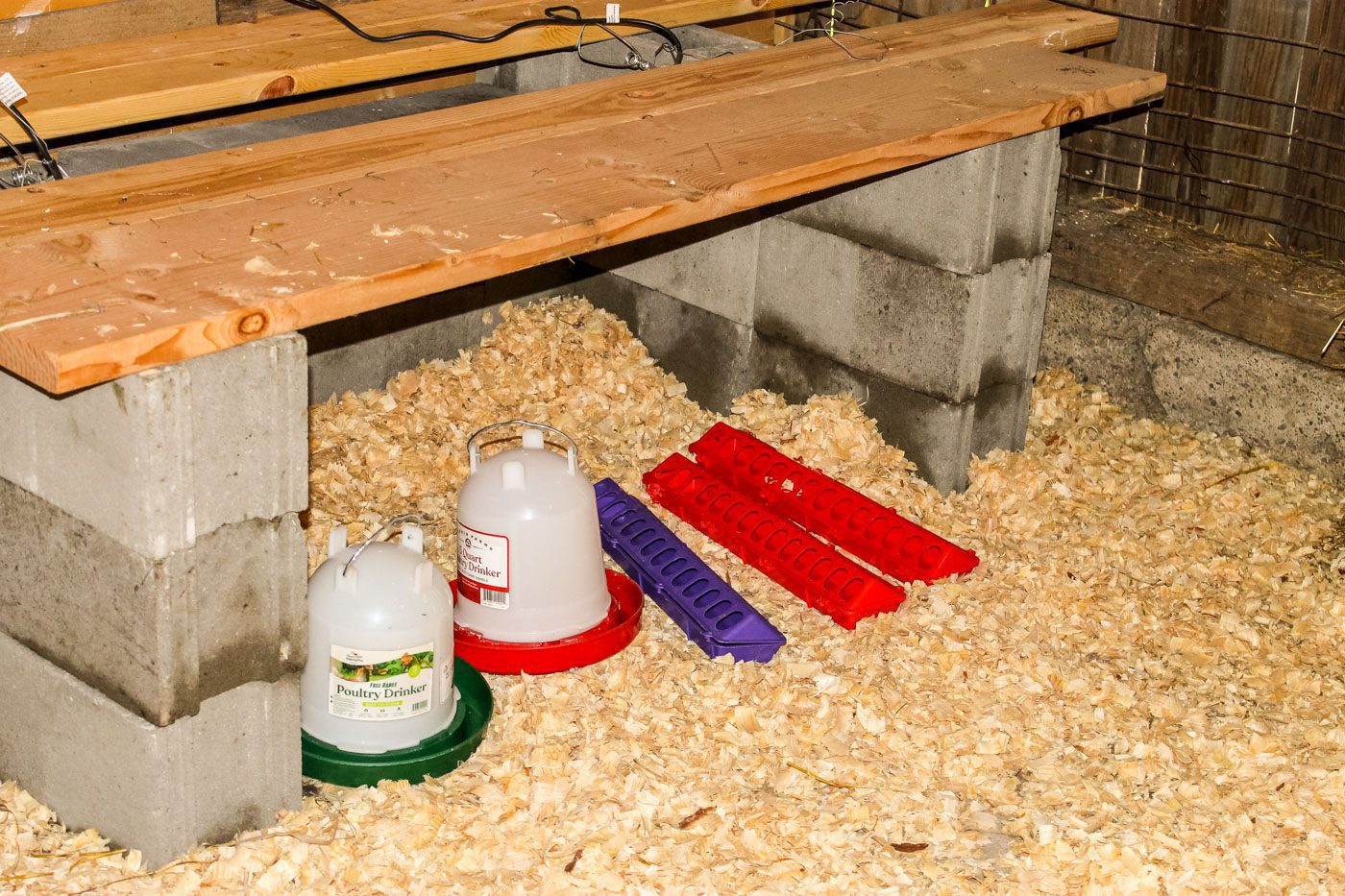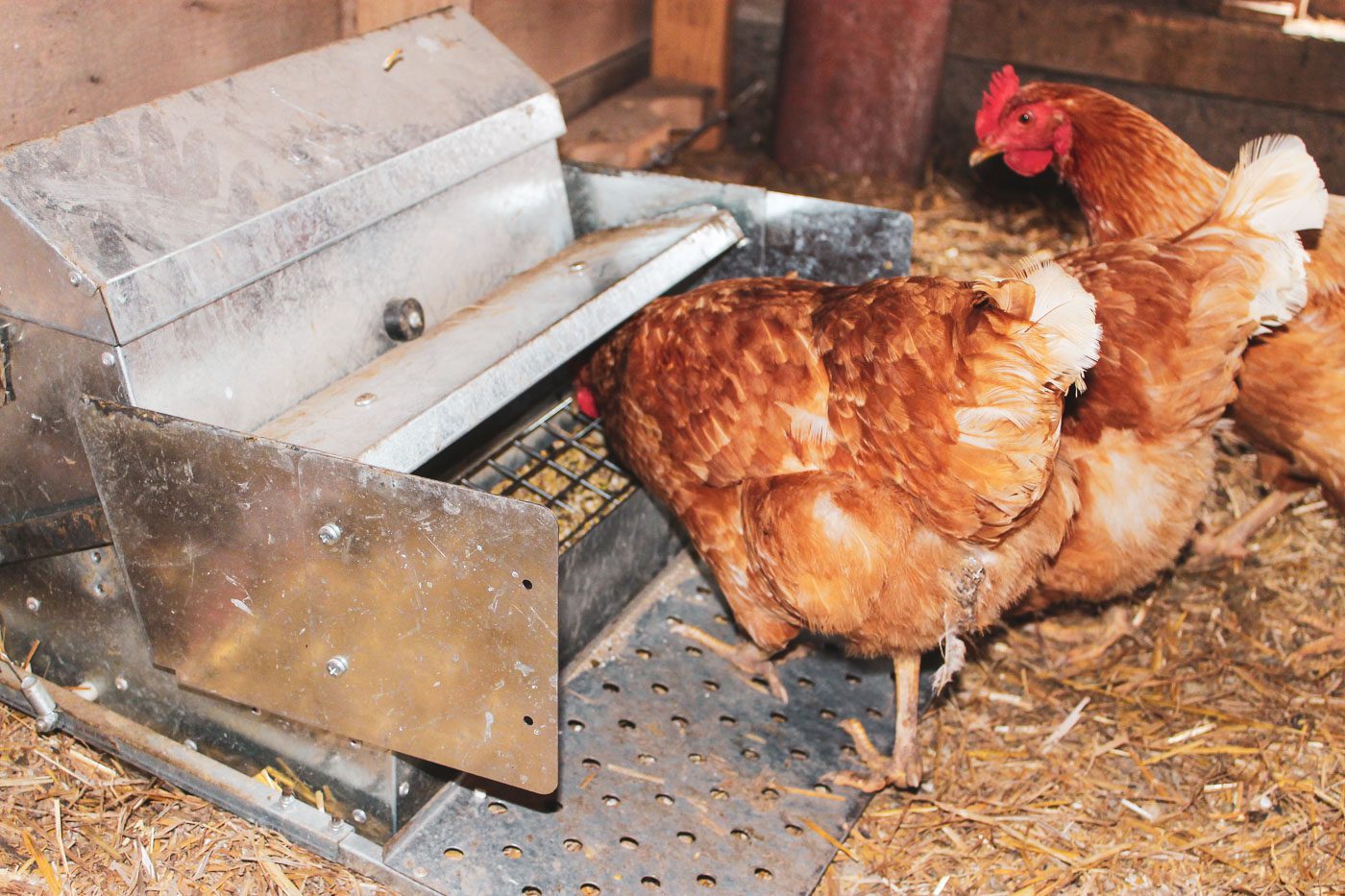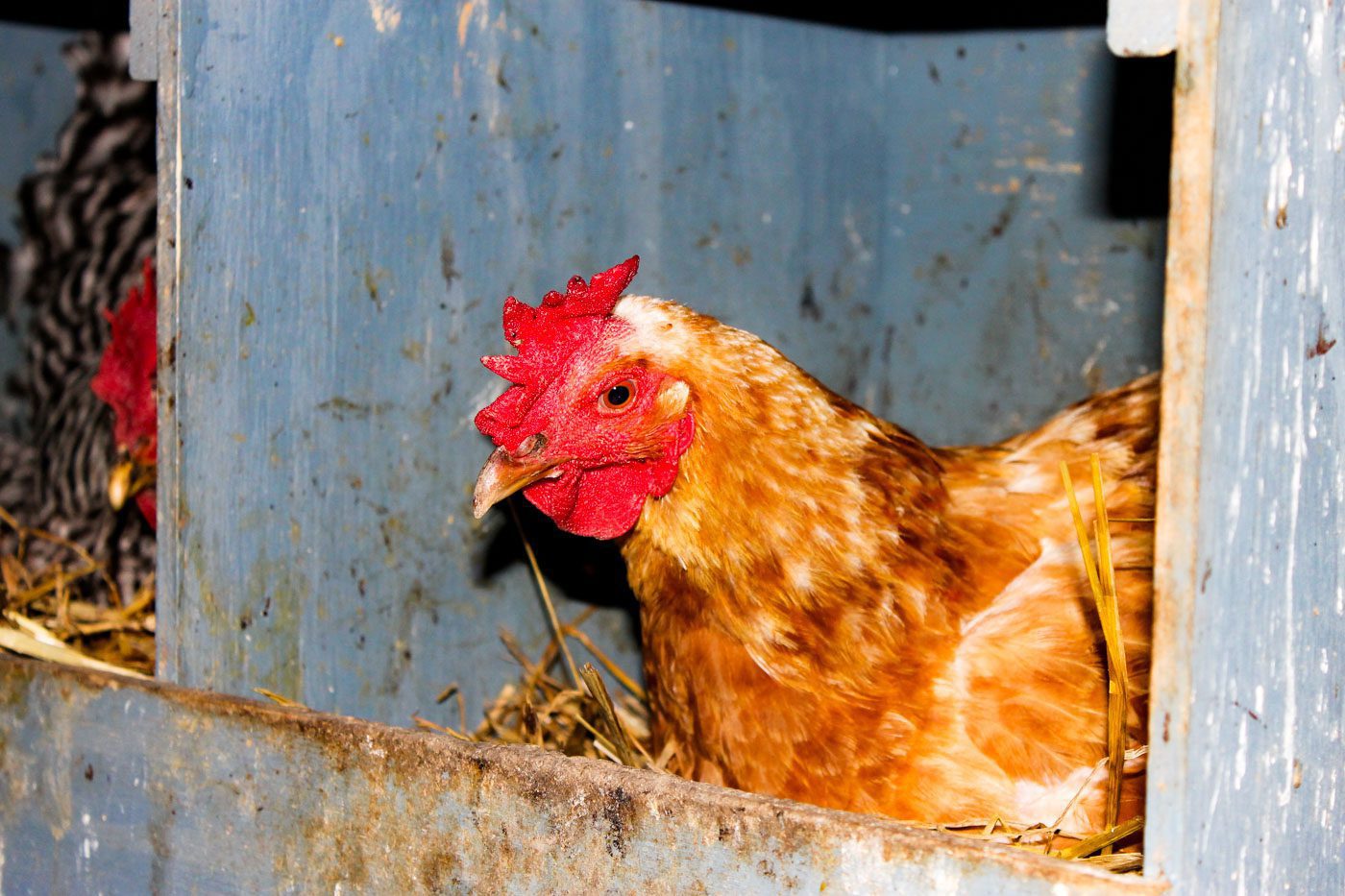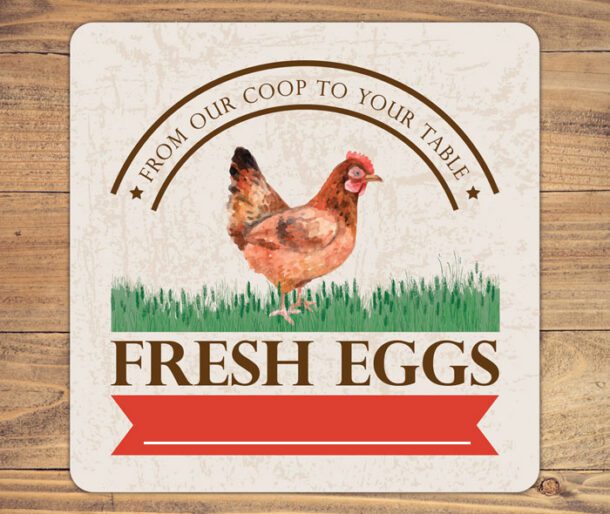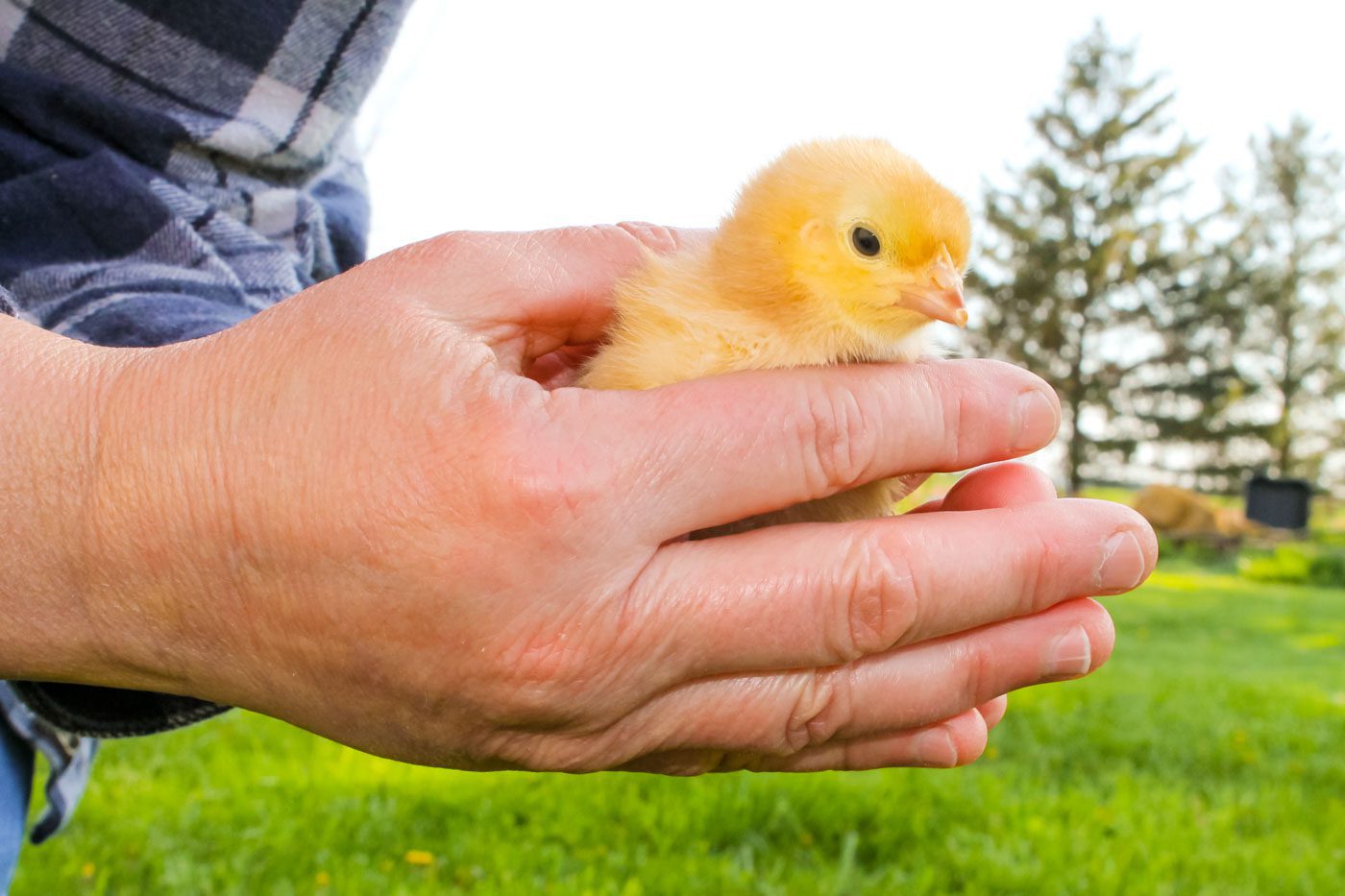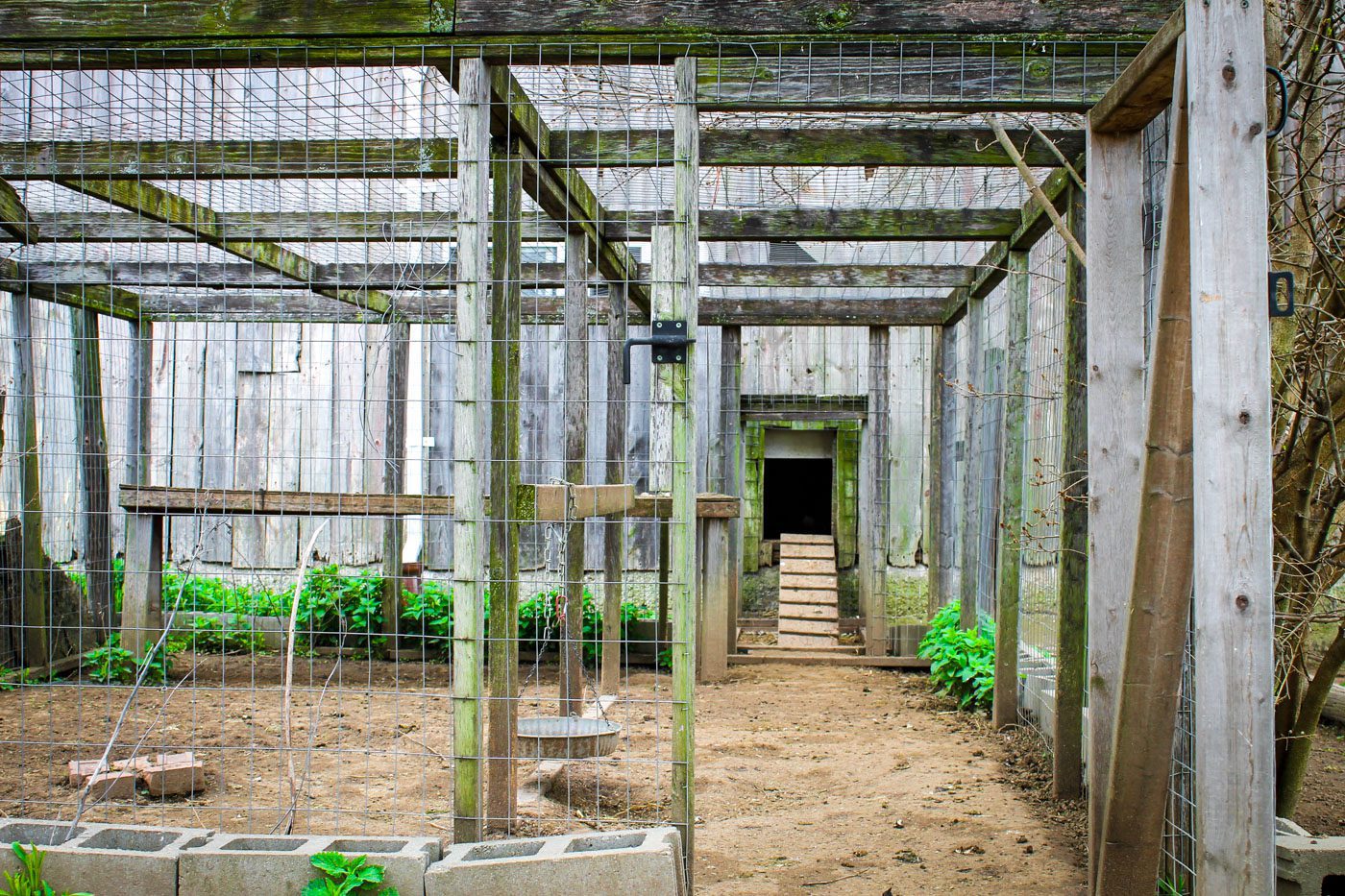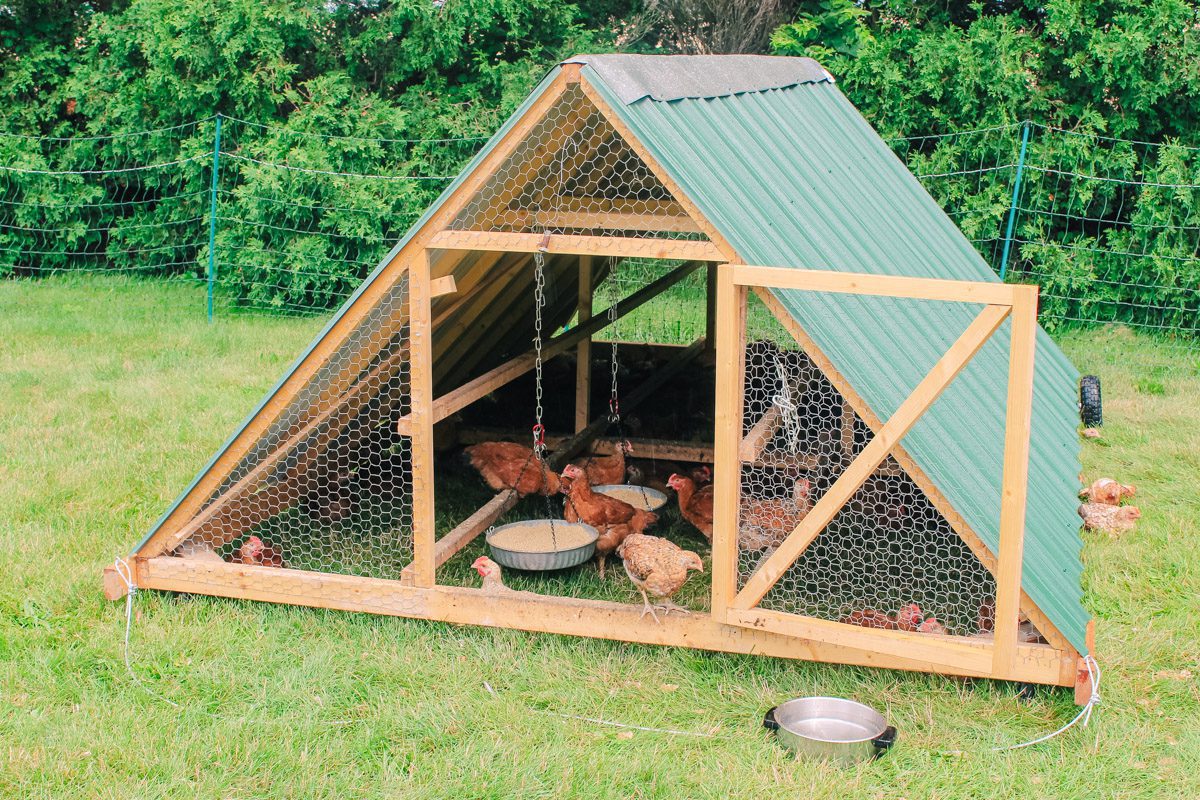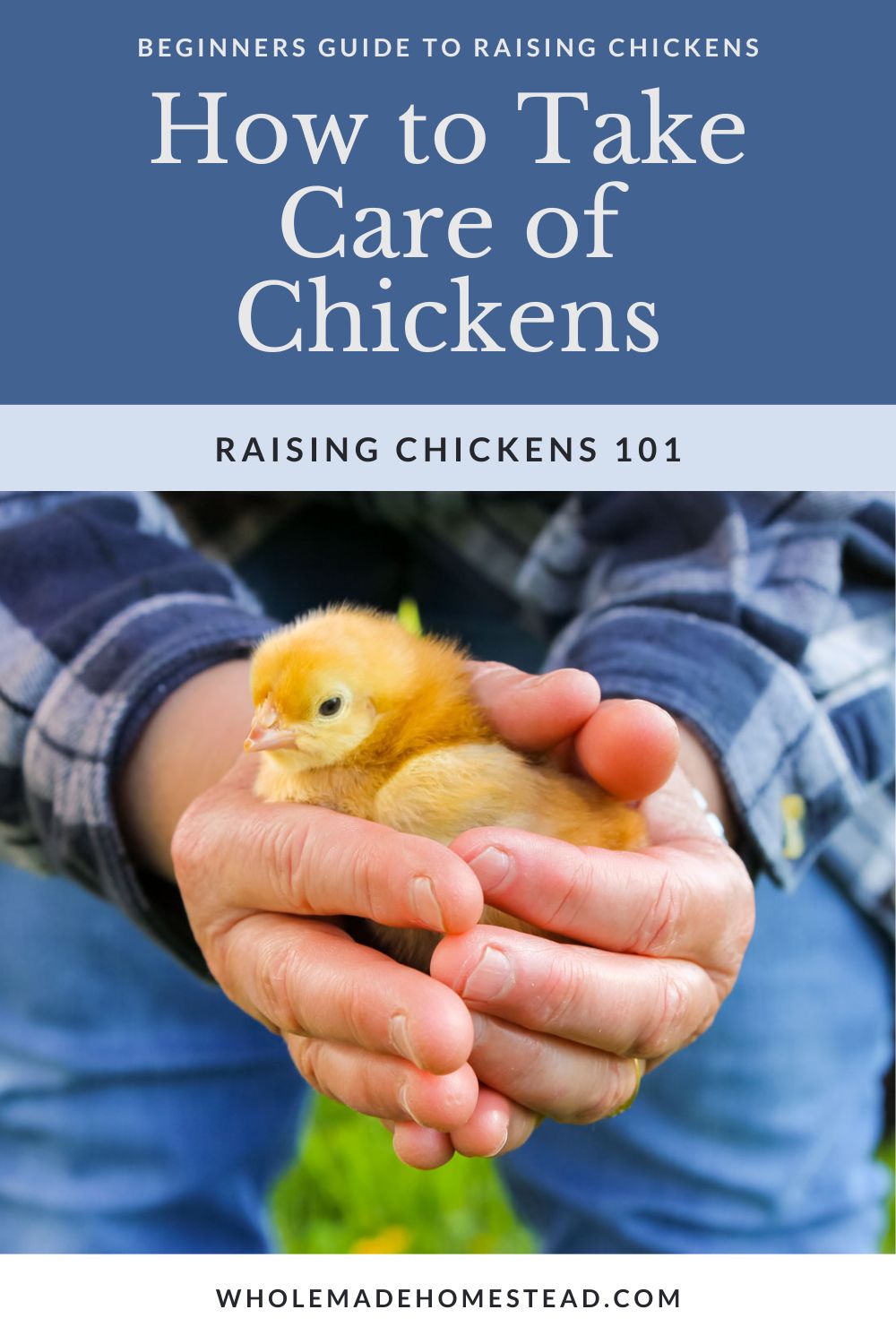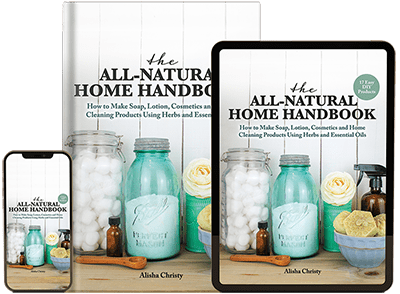Are you ready to add chickens to your homestead? But don’t know where to start? Raising chickens is a joy and an excellent way to live a more sustainable life. In this beginners guide, I share practical advice for how to pick the best egg laying breed for your property, what supplies you’ll need to get started, how to set up your coop, what to feed your chickens to maintain a healthy flock and much more.
This post contains affiliate links, which means I make a small commission at no extra cost to you. In any case, I only link to products we actually use on our homestead and that I believe can truly benefit to you. See my full disclosure here.
Raising Chickens 101
Gardening is what began our homesteading journey. Fresh, crisp lettuce. Juicy tomatoes. Green peppers picked right from the vine. Not only were they delicious, it saved us many trips to the grocery store.
“What’s for dinner?”, my husband would say.
“Grilled chicken, rolls and a salad with all the trimmings”, I’d reply.
I could simply walk into the backyard to grab the ingredients I needed to make the salad and dressing. It was so convenient and worth every ounce of energy we put into our little backyard garden.
As our homestead grew, along with my parents little farm, we expanded our skillset. Larger gardens. Canning. Fermenting. Bread made with fresh milled flour. And of course, chickens. Most people consider them the gateway animal but they came into our lives part way into our homesteading journey. On our trek to natural living, we added a small flock of chickens. The first few we purchased were a mixture of chicken breeds. One of our favorites, the Barred Plymouth Rock has outlived any breed we have ever had. These old ladies have laid eggs for countless years and surprisingly all 6 have stayed healthy and vibrant. And even though these hens are now well past their prime egg laying years, we still keep them around because they were the “originals” — the founding chickens, should I say.
Throughout our time of chicken keeping we have read countless articles and books, experienced good and difficult seasons with our flock and learned what works and what doesn’t. Below is a compilation of the knowledge we’ve gained about raising chickens. May it guide you on your natural chicken keeping journey, giving you a solid foundation for raising chickens in your own backyard.
What is the Benefit of Raising Chickens?
Raising chickens in your backyard can be very rewarding. The number one reason people have a backyard flock is for the eggs. Nothing can compare to a delicious and nutritious farm fresh egg. But raising egg layers is more than just harvesting a nutrient dense food, it is about taking responsibility for your own food, knowing where your food is coming from, reviving lost skills and developing an understanding of how to raise livestock. A few other benefits of raising chickens can be:
- Their poop makes a terrific fertilizer
- The straw from their coop can be used as compost in your garden
- Chickens eat insects, which helps to reduce the number of pests in your garden
- Their egg shells can be used to add calcium to your garden
Best Chicken Breeds for Egg Laying
There are a variety of chicken breeds that serve different purposes such as egg laying, meat and dual purpose. On top of that there are heritage and hybrid breeds. The information can be a bit overwhelming at first but to keep things simple for the purpose of determining what chicken breeds are best for egg laying, let’s stick with this general list. If you’d like more in-depth detail about picking the right breed for your backyard flock, I highly recommend Amy Fewell’s book, The Homesteader’s Natural Chicken Keeping Handbook.
- Barred Plymouth Rock
- Easter Eggers
- Rhode Island Reds
- Leghorn
- Golden Buff
- Buff Orpington
- Wyandotte
- Black Australorp
- Brahma
- Sussex
Where to Buy Chickens
There are many small and large hatcheries across the US that will sell you egg layers. We have been happy with the chicks we purchased from Meyer Hatchery. Meyer’s is located in eastern Ohio which makes it convenient for us to take a day trip to pick up our day-old chicks. When selecting a breeder to purchase from, do your research. Consider experience, reviews, cost and shipping types such as overnight or pick up. Here are a few other places that sell poultry.
- Farm supply stores such as Tractor Supply or Family Farm and Home
- Murray McMurray Hatchery
- Local hatchery near you
When is the Best Time of Year to Buy Baby Chickens?
Mid spring to early summer is the best time of year to buy day-old chicks. A couple reasons as to why you’ll want to wait until spring is first due to the weather. Baby chickens like lots of heat. The first several weeks of life they need a very warm, draft-free shelter to reside in. Sure you could get them earlier and raise them in a small stock tank inside your house but your house will be filthy. Trust me, been there done that. Our house was covered in a thick layer of dust and debris by the time the chicks “flew the coop”, should I say.
The second reason you may want to purchase chicks in the spring and summer months is the timeframe of laying. Generally it takes about 5-6 months for a chicken to mature and begin laying eggs. By purchasing the layers during the springtime, you will be able to start collecting eggs by mid to late fall.
Supplies You Need for Keeping Chickens
Before you start raising chickens, there are some supplies you will need. Below is a beginners guide to keeping chickens in the backyard.
1. Brooder
Young chicks need a secure, draft-free brooder with a heat source such as a red heat lamp. What is a brooder? It is basically an enclosure for raising baby chicks. You can purchase a brooder or you can build a DIY brooder box using concrete blocks, a metal stock tank, a plastic crate or wood. We have used galvanized tanks, an old wooden kids clubhouse and a cement blocks. As long as the brooder box is warm and secure, it’ll do. The brooder will last until the chickens have outgrown the space and need to be transferred to a larger area or outdoors (if the weather is agreeable).
2. Bedding
Bedding for the brooder or chicken coop can be in the form of pine shavings or straw. We usually use pine shavings for baby peeps and then layer the main chicken coop with straw. Since chickens are dirty little birds, they will need their bedding changed frequently.
3. Heat
Next you’ll need a heat source for the new chicks. There are an assortment of options but we usually use a few heat lamps with red bulbs. Due to the fact that this type of heating source has been known to cause fires we will triple secure it to prevent it from falling. Some heat lamps have a built in cage surrounding the light bulb to help prohibit it from breaking or burning, should it fall.
Most people recommend to keep the brooder at 90° F to 95° F, however the best advice I can give is to keep a close eye on your birds. In many cases, 95° F can be too warm for the chicks. The chickens will retreat to the other side of the brooder to get a little relief from the heat lamp. If this is the case, move the lamp up to reduce the temperature. On colder nights, they may want that extra heat. It pays to know and understand your livestock.
4. Waterer and Feeder
Chicken waterers come in all shapes, sizes and materials. For our baby peeps we usually stick with a plastic gravity-fed chicken waterer. Sitting the waterer on top of a block of wood can help to prop it up high enough so the little chicks don’t toss their bedding into it. When the chickens get older we provide them with a larger watering source.
A gravity chicken feeder or a flip-top feeder works well for young poultry. Our adult hens used to use a DIY chicken feeder made with PVC piping but we began having major issues with other birds, like sparrows coming into the coop and eating all of the chicken feed. To fix this issue, we swapped out the old feeders for an automatic chicken feeder. The lid lifts as the chicken steps on the peddle. No longer do the chickens waste the feed nor can the mice and sparrows access the food.
5. Chicken Feed
There are a plethora of options when it comes to chicken feed. Big box brands are probably the most common but that doesn’t necessarily mean they are the best. Chicken feed is available in crumbles, pellets, organic, non-gmo, soy-free, corn-free and more. We used to feed our hens organic egg layer feed from the hardware store but we found that our chickens began having health complications. We made the switch to Kraut Creek poultry feed and have been more than pleased with the results. You can learn more about our favorite chicken feed as well as other types of food to feed chicks in the “what to feed baby chickens” section below.
6. Scratch Grain and Grit
Chicks don’t need scratch grain or grit but it may be something you might want to consider for your future adult chickens. We like to give these grains to our egg layers as a treat. It gives the hens something to do and provides extra nutrition. Plus, if you have a defiant chicken that doesn’t want to go into the coop or run at night, tossing some scratch grains into the run can help to persuade them to go the right direction.
7. Chicken Coop With Nesting Boxes
The last thing you’ll need is a chicken coop with some nesting boxes for the chickens to lay their eggs in. Our chicken coop is located inside a room in the barn. If you don’t have a barn or shed, you can purchase a poultry hutch from a hardware store such as Tractor Supply or you can build your own. Some people prefer a mobile coop such as a chicken tractor instead of a stationary container. You can learn about our a-frame chicken tractor at the bottom of this page.
The chicken coop in our barn is complete with roosts and nesting boxes or should I say buckets. Half of our nesting boxes are made using 5 gallon plastic buckets with a bit of straw inside. The top boxes are built-ins made with wood. Milk crates, repurposed furniture such as an old bookshelf and plastic storage bins also make great nesting boxes.
What to Feed Baby Chickens
When you first get your chicks, you will want to give them a starter feed. Now the choice of medicated versus non-medicated is a controversial topic. Some chicken keepers swear by it and others feel a medicated feed is unhealthy. When we first began raising chickens, we gave our chicks medicated feed. Over time we couldn’t tell a difference in the health and performance of the chickens so we switched to a non-medicated version. The choice is completely up to you.
Many people recommend feeding egg layers feed from a big brand. It is convenient to find and usually budget-friendly. However, it has been our experience that the health of our chicks as well as our older hens greatly improved when we used chicken feed from a small business. After feeding our chicks with locally produced food, they no longer struggled with pasty butt. As they grew, they didn’t have any other health concerns either. Our favorite brand of non-gmo chicken feed is Kraut Creek. Their products are made without any growth hormones or antibiotics and can be purchased without soy, if desired.
Fresh, clean water is the next item your chickens will need. Common chicken waterers come in metal or plastic with a jar that snaps or screws onto the base. The benefit of galvanized steel poultry waterers is that they can be set onto a heater in the winter months to prevent the water from freezing. The downside is that they will eventually rust. When our chicks are young, we will add apple cider vinegar, raw honey, garlic or herbs into their water to help support their delicate immune systems.
As the chicks grow, at approximately 4-5 months of age, you will switch out their starter feed to a layer feed. You can also give them treats such as meal worms and scratch grain or leftovers from the table. Our chickens love bread, pasta, blueberries and are more than thrilled when they get a fresh veggie from the garden like cucumbers and zucchini.
Can I Give my Chickens Fresh Herbs?
Yes! Herbs are an excellent way to keep your flock healthy. When a group of our layers can down with some respiratory troubles, giving them marshmallow in their feed and water helped to not only keep them alive but heal their lungs. Many people enjoy adding herbs into nesting boxes but we personally have found that our chickens don’t care much for that. Instead we occasionally place dried or fresh herbs into their water container and feeder. Some of our favorite herbs to feed chickens are:
- Calendula
- Oregano
- Marshmallow
- Garlic (sparingly as it can be harsh when used for an extended amount of time)
- Thyme
- Rosemary
Free Range Versus Chicken Run
Farm. What comes to mind when you think of that? Perhaps a cow? Wide open fields? A tractor? How about chickens? But not just any ol’ chickens, a free rangin’ flock roaming the grassy fields. While that is a romanticized picture, sometimes free ranging isn’t always possible. Now, don’t get me wrong, I am strongly against CAFOs (concentrated animal feeding operations) also known as factory farms, but let’s be realistic and say there are a few disadvantages to a 100% free range backyard flock.
Let’s start with an example. My parents have a 3 acre property out in the country. On their homestead they have their farmhouse, a few out buildings, a large garden and a chicken coop. The chickens have a DIY chicken run attached to the barn. Within the barn is their chicken coop where their nesting boxes are located. Outside of their run is a giant space with fresh grass, bugs, fruit trees and plenty of fresh air and sunshine. Initially, when my parents first began raising backyard chickens, they allowed the chickens to roam freely across the entire property. At first this was wonderful. The chickens ate the bugs in the garden and fertilized the lawn. However, they quickly began to eat the vegetables and tore up the garden and landscaping around the front of the house. Plus a few wandered too far off the property and one met its demise on the road.
To prevent destruction and save the lawn, the chickens got put back into the pasture where they could move about freely in a safe, fenced in space. Should a hawk or other predator come along (which has happened many times) the chickens can race into their enclosed run for protection. It is really the best of both worlds. Free range abilities with fresh grass and bugs but limitations as to where they can go for their protection and preservation of the garden.
DIY Chicken Tractor
Another option for free ranging chickens is to build a moveable chicken coop also know as a chicken tractor. A chicken tractor, especially when moved once a day or every couple of days provides the birds with fresh air and green grass to graze as well as protection from predators, heat and bad weather. My family uses our mobile coop to raise meat birds. You can learn how we built our a-frame chicken shelter in this article.
More Backyard Chicken Tutorials
How to Take Care of Chickens in the Winter
How to Raise Chickens for Meat
Turn an Old Chicken Waterer Into a Planter

